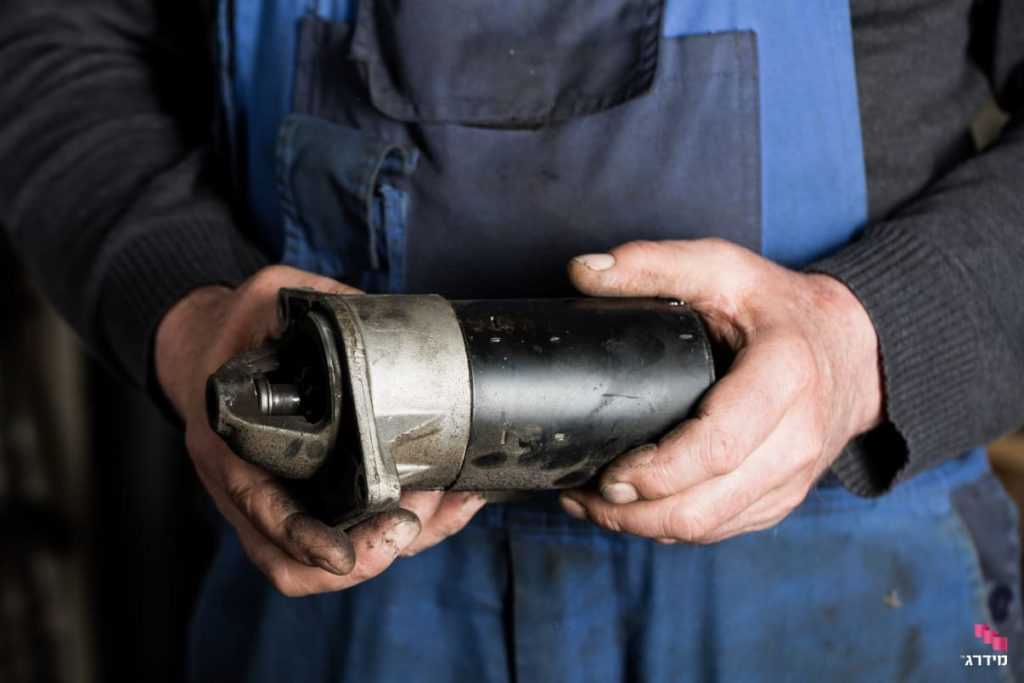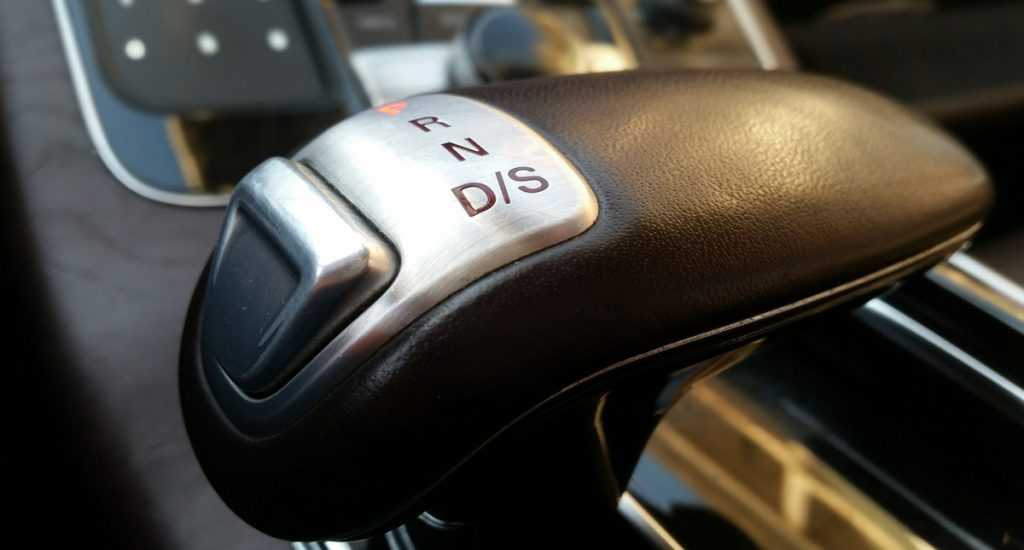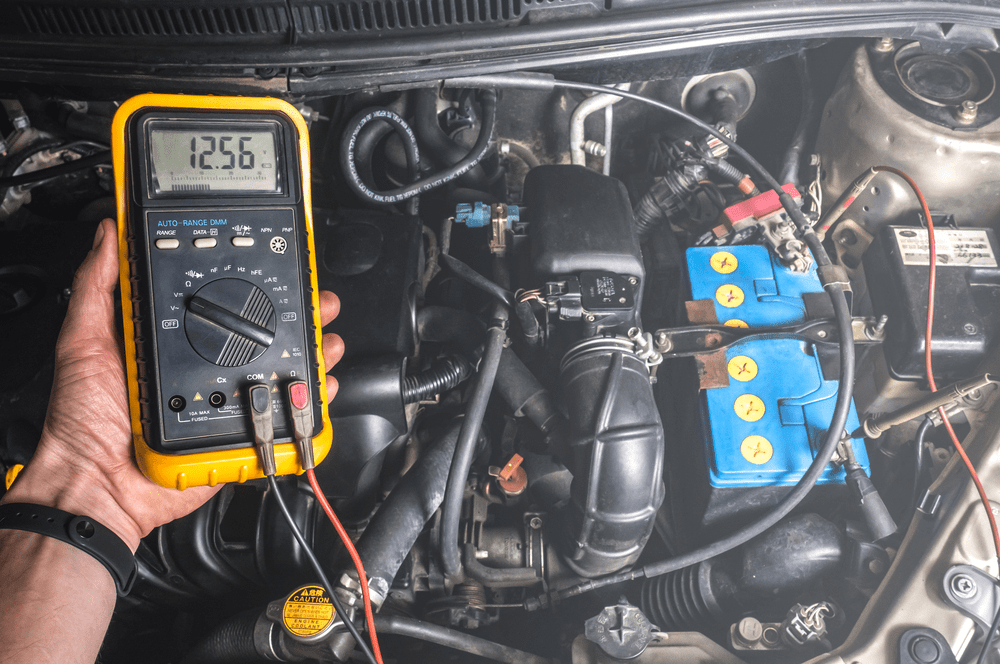There are a lot of questions which we receive everyday about the problem related to car parts. And starter solenoid is a part of the auto that we get the most questions about. So what is starter solenoid, how to tell if starter solenoid is bad and how to test a starter solenoid? Find your answer in this topic.
Contents
What Is A Starter Solenoid?
Before going to know how to test a starter solenoid, let’s introduce to you the definition of starter solenoid.
According to Wiki, a starter solenoid is an electromagnet which is actuated to engage the starter motor of an internal combustion engine. It is normally attached directly to the starter motor which it controls. Its primary function is as the actuating coil of a contactor (a relay designed for large electric currents) which connects the battery to the starter motor proper.

All modern cars also use the starter solenoid to move the starter pinion into engagement with the ring gear of the engine. The starter solenoid is sometimes called the starter relay, but many cars reserve that name for a separate relay which supplies power to the starter solenoid. In these cases, the ignition switch energizes the starter relay, which energizes the starter solenoid, which energizes the starter motor.
So when you turn on the car, the solenoid provides the energy from the battery to the starter motor. That is how your car starts running. So the starter solenoid is bad sometimes, which causes the bad performance of your car. That’s why the starter solenoid is needed. Let’s learn how to test a starter solenoid or in other words how to check starter solenoid.
How To Test A Start Solenoid?
There are several ways on how to test a start solenoid. We are now introducing to you 2 effective ways to do that.
Method 1: The Preliminary Testing
Before going to do this, you should keep your car in neutral to ensure that your parking brake is turning on. For safety reasons, you have to do that. If your car is not in neutral mode, starter circuits are not engaged.

The second thing you need to do is check again other problems related to the battery since a bad battery can cause the dead car too. If you do not check it before going to test the starter solenoid, it may waste time in case the battery is bad. You also need to make sure that the ignition switch itself is working properly.
Step 1: checking the wiring which is connected to the solenoid.
Sometimes, it is possible for a bad starter solenoid to have a bad wiring. Therefore the solenoid will lose the wire or the corroded terminal. You should make sure that all of the connections are secure and that the terminals are cleaned.
Step 2: Unhooking the wire and turning the ignition key.
At this step, there is a tip for you to diagnose your starter solenoid. Checking the wire, if it clicks, proceed to further testing. But if it does not, you better replace the new one since the solenoid is defective.
This is the first method on how to test a starter solenoid.
Method 2: Current Resistance Testing
In this method, you will use the voltmeter so prepare one in advance.
Step 1: Connecting the voltmeter to the battery
Since you have to check how much voltage is currently passing the circuit, you need to connect the voltmeter to the positive terminal on the battery. Pay attention at this step to avoid connecting the voltmeter with the negative terminal of the battery. The positive terminal will have the (+) symbol or the letter “POS”.

Step 2: Connect the negative lead to the ground terminal.
The next step on how to test a starter solenoid is determining how much voltage the starter solenoid is drawing from the battery when it is attempting to start. Then place the black lead (negative lead) from the voltmeter to the negative terminal on the battery to complete the circuit.
At the end of the first 2 steps, the voltmeter will turn on.
Step 3: Reading the parameter on the voltmeter.
If your car is normal, your car battery will produce approximately 12 volts when nothing is drawing off of it. But there is the case that the voltmeter is less than 12 volts, the vehicle may not be starting due to insufficient charge on the battery.
When reading the volt on the voltmeter, try to maintain the voltmeter and do not let the voltmeter move. Because the number may jump around as you move leads a bit and the meter tries to read the voltage. So let it settle to read correctly the voltage.
Step 4: Turning the ignition
At this step, you need a friend who can help you on turning the ignition. While holding the leads on the positive and negative terminals on the battery, ask your friend to turn on the ignition so the car can start. When your car starts idling, the voltage on the voltmeter from the battery should drop approximately half a volt while the starter attempts to start the vehicle.
So if the voltage does not change, there is a problem with connection between the battery and the starter.
SEE MORE:
- How To Tell If Starter Relay Is Bad? Four Common Symptoms
- What To Do When Car Starter Clicking Constantly?
- An Explanation Of How A Car Starter Works
Step 5: Place the voltmeter to the leads on the starter solenoid
On this step of how to test a start solenoid, you need to move the positive lead from the voltmeter to the lower terminal from the solenoid. And the negative lead on the upper most terminal coming from the battery. Then, ask your friend to turn on the ignition again.
Step 6: Repeating Step 3 – Reading the voltage on the voltmeter.
Look at the voltmeter and see the voltage drop on the solenoid. It should match the drop you saw on the battery. The drop in voltage should not exceed a half a volt. Then your car has a good starter solenoid.
But if you can not read any voltage at all, properly your solenoid needs to be replaced. There is a case that the voltage drops too much. If this phenomenon happens, there is a possible fault in the connection such as a crimped line from the battery to the solenoid.
What Causes A Starter Solenoid To Become Faulty?
There are some possible reasons behind a faulty starter solenoid, they are:
Worn out Wiring
Poor and hurried wiring lead to either inadequate current supply to the starter solenoid or a more dangerous problem of shorting. They can make the starter solenoid to malfunction and cause starter system problems. Bad wiring instances include terminals that are left loose or connected the wrong way.
Excessive Moisture
This is a “common to see” reason why you have to learn how to test a starter solenoid. If moisture is left to get inside the starter solenoid, it leads to corrosion of the electrical contacts. The result is reduced conductivity of the contact surfaces. The efficiency of the starter solenoid becomes greatly reduced, and you experience occasional starter fails. You may hear some strange sound like the starter click and stop almost immediately when you have a bad starter solenoid.

Too Much Tightening of Bolt
When you use the tightening tool, it is possible for you to over tighten the bolt. It will cause some parts inside and outside of the starter solenoid to break or bend. The result is shorting or mechanical failure of the affected parts.
Excessive Heating
The last reason which should be considered as a reason behind a bad starter solenoid is excessive heating. It happens when extremely high currents flow to or through the solenoid, and for too long. Then, the soldering in the contacts melts, and they weld together. The starter solenoid will be damaged and lead to the result of replacing the new one.
They are the four common to see reasons why the starter solenoid is bad. And what happens when a solenoid goes bad is predictable. Your car will stop running and it also affects other parts of the car.
Sum Up
We have just introduced to you the method on how to test a starter solenoid and the symptoms of the bad starter solenoid. Do not forget to read other maintenance tips to have better knowledge about your car and how to fix it when needed.



